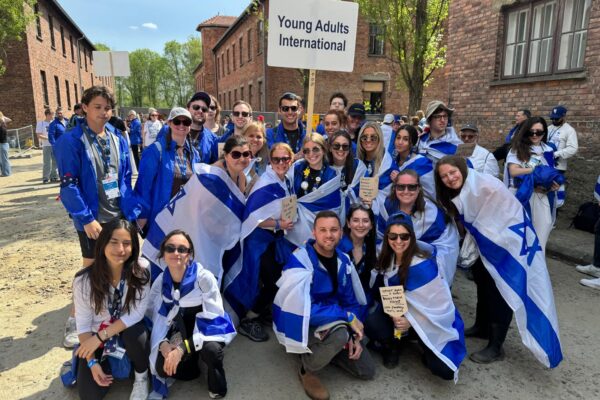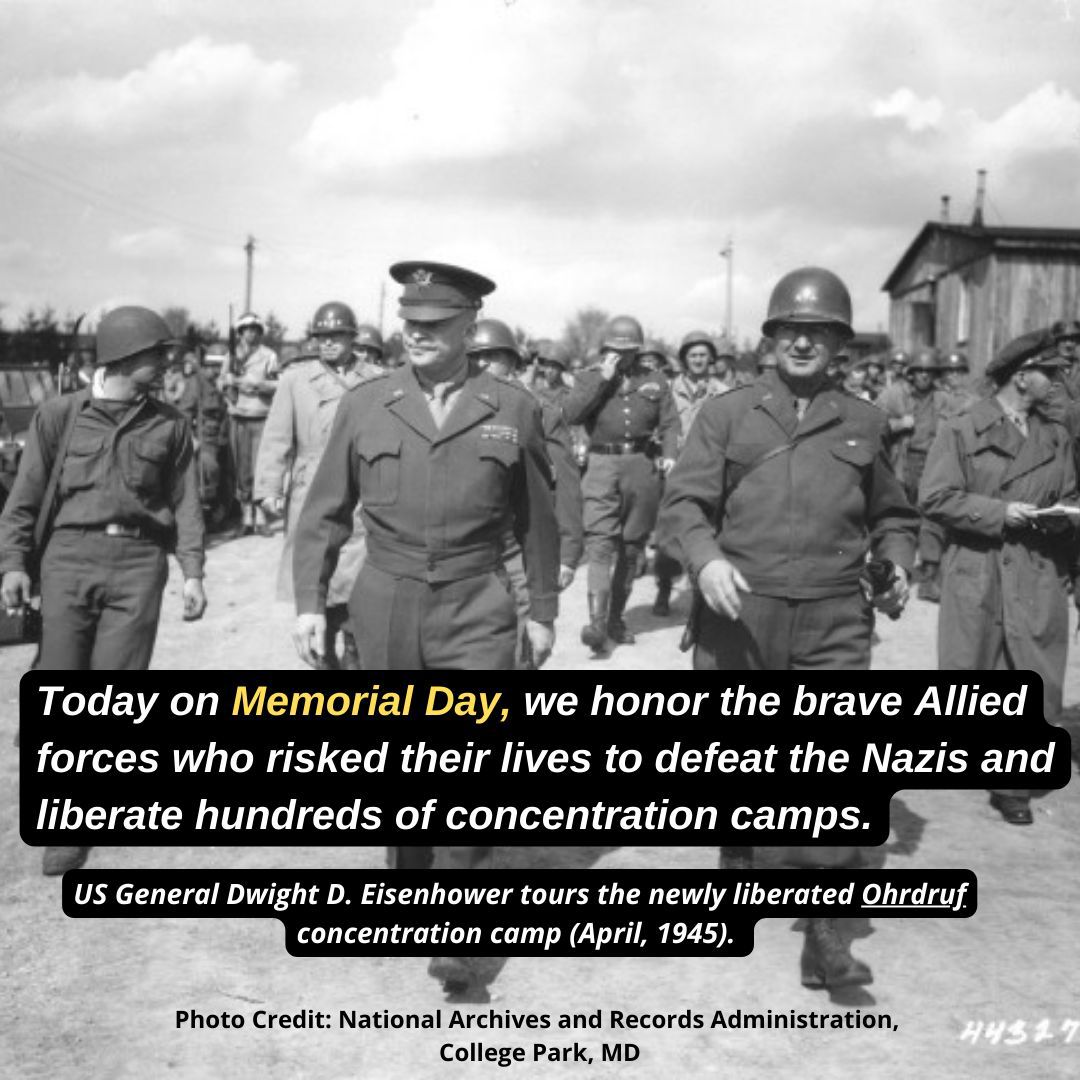
In the United States, Memorial Day is being observed today throughout the country honoring the U.S. military personnel who died while serving in battle.
This includes the over 400,000 American soldiers who died serving in World War II, of the over 16 million American soldiers who enlisted.
During World War II, 550,000 Jewish soldiers also served with the US armed forces. (Another 1 million Jews served in other Allied forces). The total number of American Jewish war casualties was 38,338 – 11,000 lost their lives.
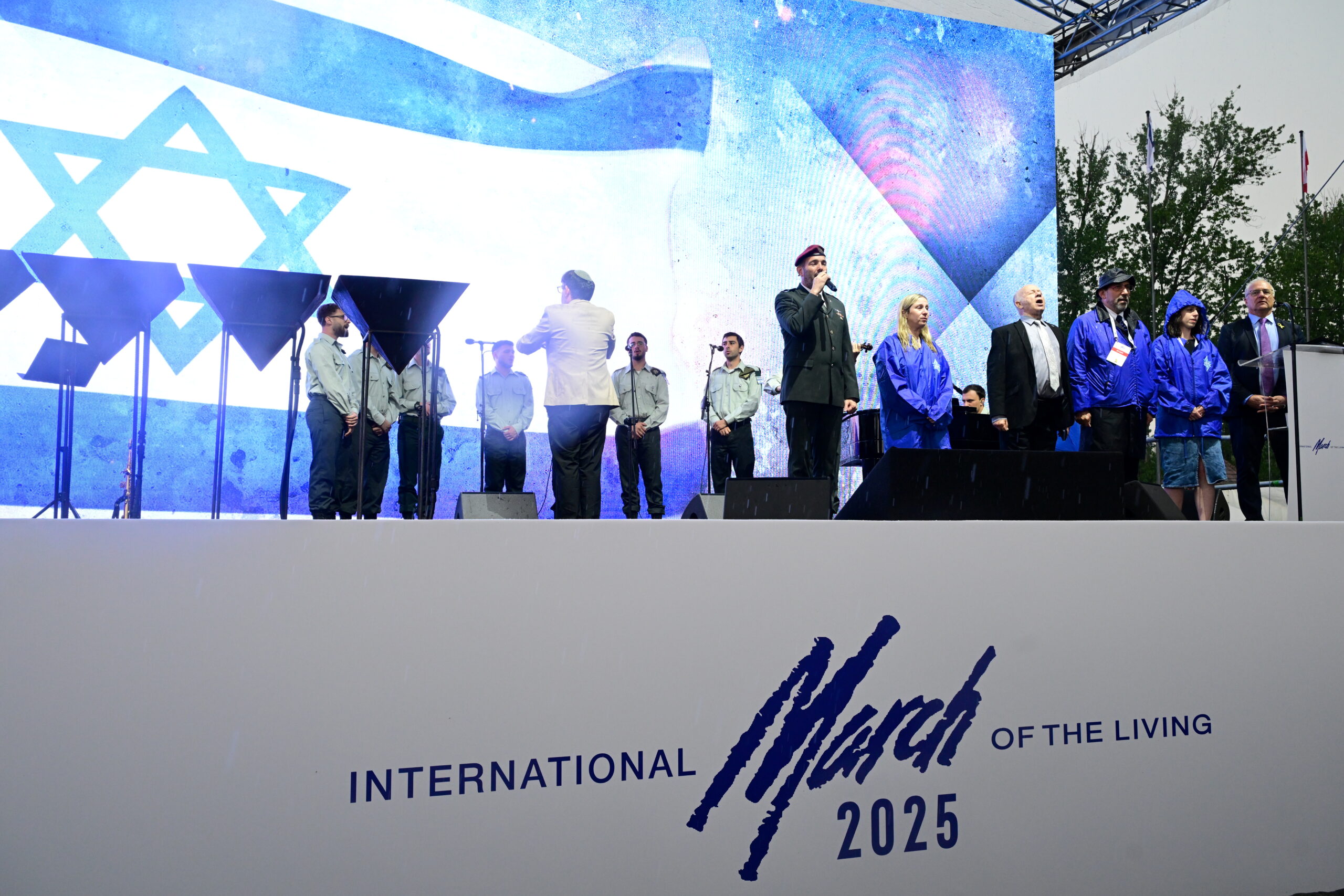
2025 International March of the Living. Photo Credit: Yossi Zeliger
The 2025 March of the Living marked the 80th anniversary of the end of WWII in Europe and the liberation of hundreds of thousands of Jews from Hitler’s camps, and in hiding places across Europe.
In the spring of 1945, as American forces liberated many of Hitler’s camps, they came face-to-face with the full brutality of Nazi Germany and their war on the Jews. Convinced that future generations would not believe the gruesome atrocities his troops were seeing – or even worse, deny the facts – General Dwight D. Eisenhower, commander of the Allied forces in Europe during World War II, insisted that large scale photo and film documentation of Nazi death camps be undertaken.
During the 2025 March of the Living program a special delegation was led by Merrill Eisenhower Atwater, the great grandson of General Dwight D. Eisenhower.
Merrill Eisenhower marched with Holocaust survivor Eva Clarke who was born in the Mauthausen concentration camp a week before her liberation by American troops led by General Eisenhower in April 1945.
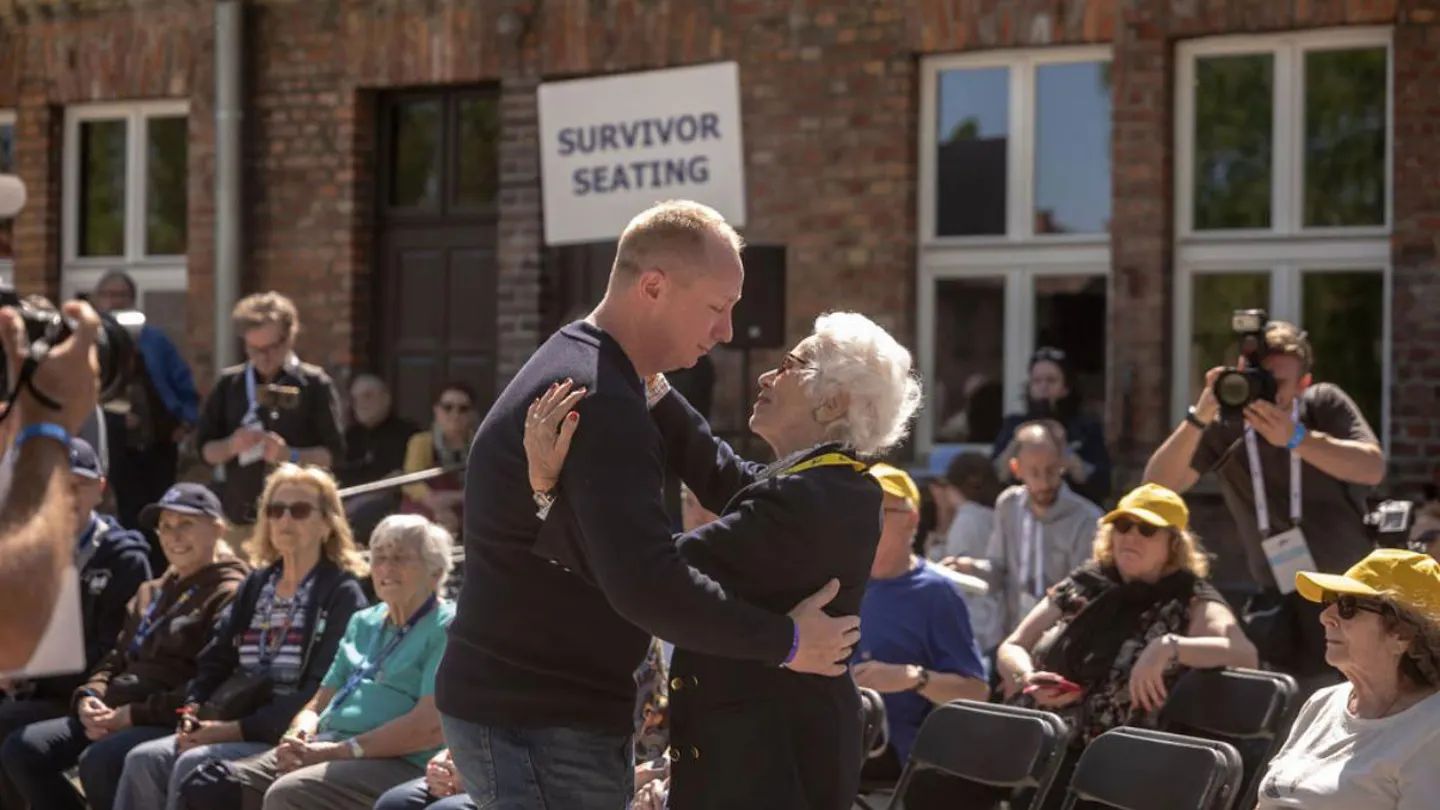
Reunion on the March of the Living of Merrill Eisenhower Atwater, the great grandson of General Dwight D. Eisenhower and Holocaust survivor Eva Clarke. Photo Credit:
Clarke stated: “I am the infant your great-grandfather and the American soldiers saved….Had they not arrived in time, I would not be standing here today.”
Merrill Eisenhower shared, “There is no greater privilege than continuing the legacy of my great-grandfather, who not only led the liberation of thousands of Jews from a cruel fate, but also ensured the world bore witness to the horrors of the Holocaust by ordering everything to be documented. To march in the March of the Living alongside survivors, whose lives were saved thanks to him, is a solemn duty.”
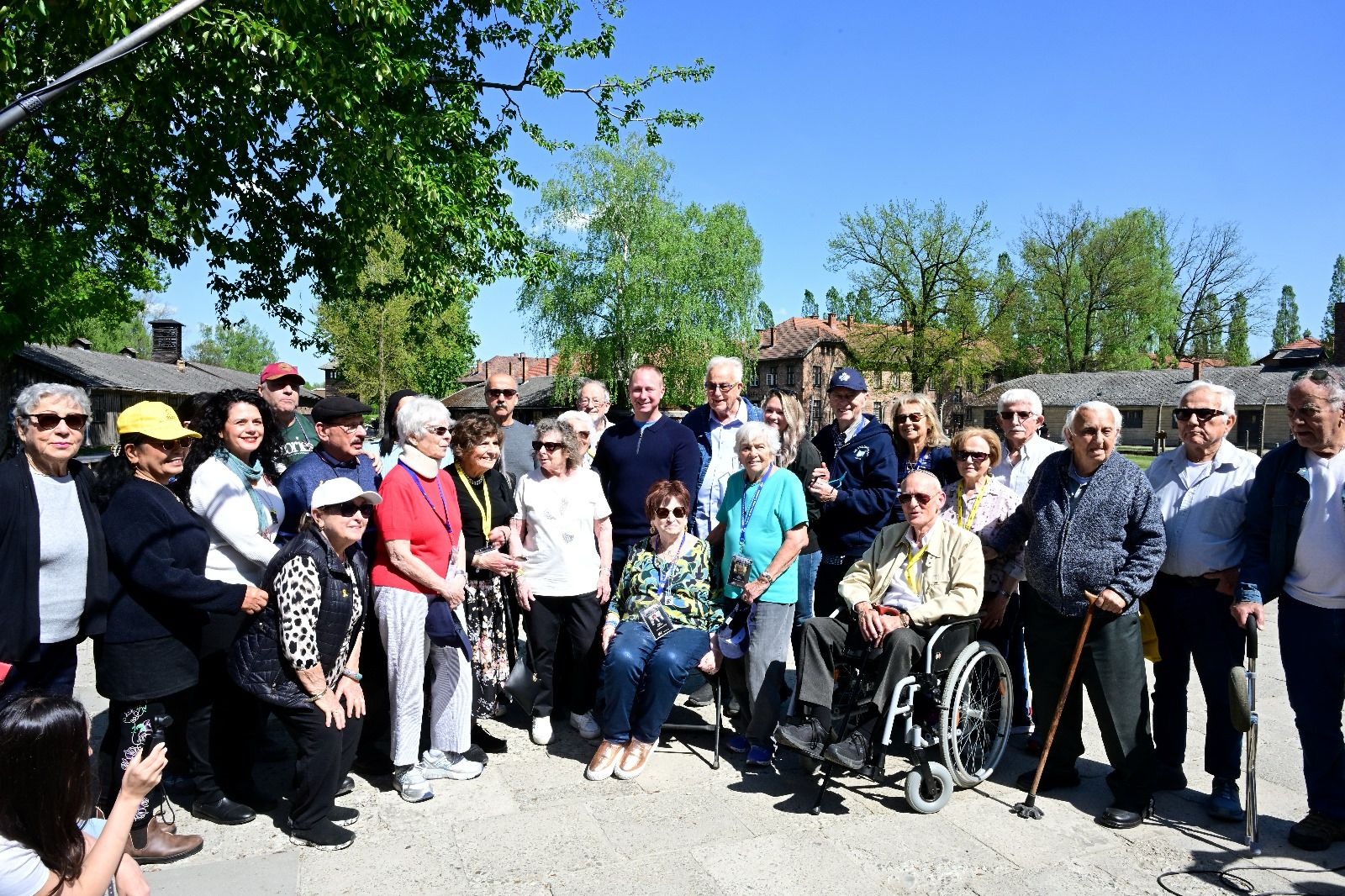
Holocaust Survivors on the 2025 March of the Living with Merrill Eisenhower Atwater, the great grandson of General Dwight D. Eisenhower. Photo Credit:
Of the almost 3 million Jews sent to Hitler’s death camps, very few survived.
Large numbers of Jews were deported to other camps (concentration camps, forced labor camps, etc.), where they perished as well.
Historians estimate that among the survivors of the camps liberated in 1945, about 90,000 Jews were still alive in the camps freed by Allied troops on the day of liberation. Tragically, many of them perished in the days following – leaving between 60,000 and 70,000 survivors to begin a new chapter in their lives.
The situation for the American liberators – many of whom were Jewish – was also not without its challenges.
Some liberators testified that as they were entering the camps, they could hear the gunfire of Nazi soldiers in the process of executing prisoners’ moments before their arrival. Others testified they arrived in one camp minutes after the Nazis herded thousands of prisoners into wooden barracks and burnt them alive.
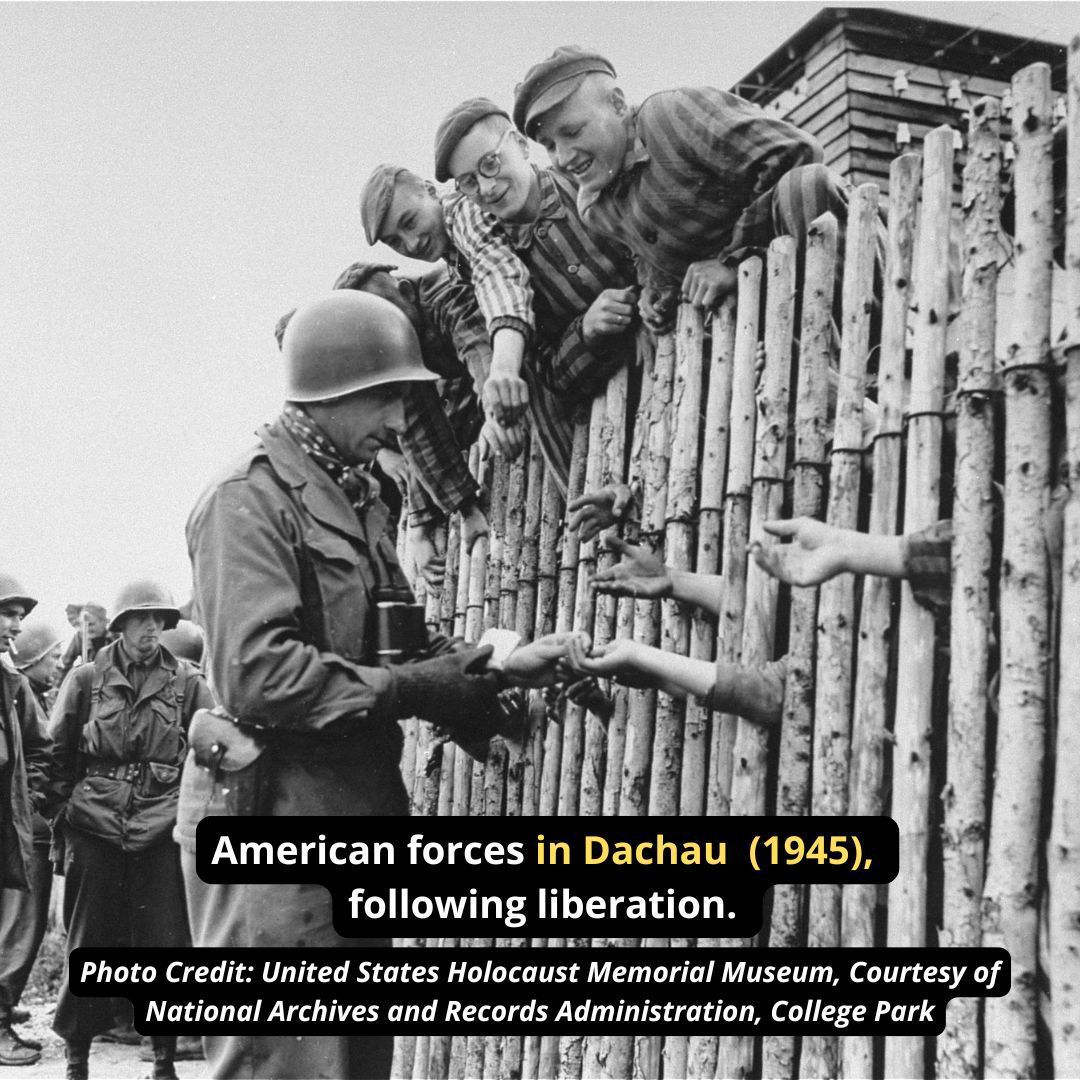
The liberators described the universal horror and shock they felt when they first saw the prisoners who barely survived the Nazi atrocities – and the piles of bodies surrounding them of those who did not survive.
Many of the emaciated prisoners were on the verge of death and sadly many of them did not survive for more than a few hours or days after the moment of liberation. Some of the prisoners, while physically alive, could not understand or even comprehend what liberation meant, or believe they were being freed from the years of torment they had just undergone.
Some of the American liberators testified, that until they saw these “walking ghosts”, they had no idea of the extent of the brutality visited upon the Jews by the Nazis – and only now did they fully understand the evil they were combating. Decades later, many of the liberators still experienced nightmares of their first encounter with these beaten, starved and. tortured Jewish prisoners, surrounded by piles of corpses too numerous to count.
According to the testimony of some American liberators, among the last words uttered by those who perished, were desperate pleas for “vasser… vasser”- “water, water”. One liberator remembers a prisoner just saying the words “too late, too late” – before expiring in front of his eyes.
Since many of the American Jewish liberators spoke Yiddish, they were often the only ones able to communicate with the survivors in a language they understood.
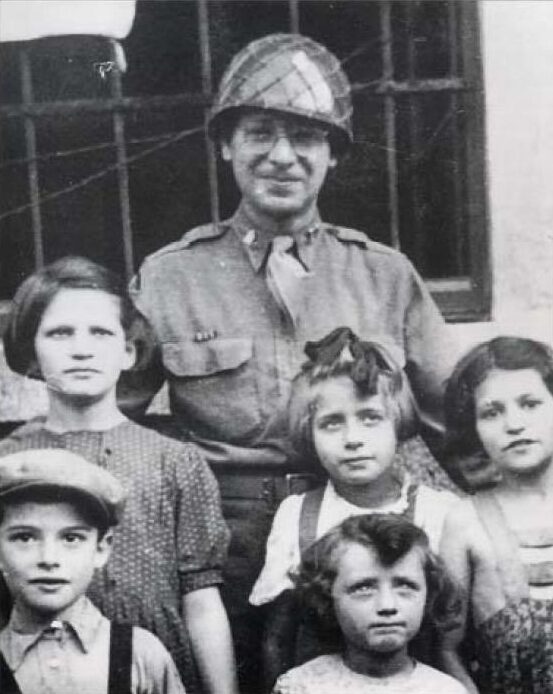
EB2. Chaplain Eli Bohnen with children in displaced persons camp, Bad Gastein, Austria, August 1945. Collection Mrs. Eli A. Bohnen. Credit: GIs Remember: Liberating the Concentration Camps – 1994, Mort Horvitz – National Museum of American Jewish Military History.
American chaplain Rabbi Eli Bohnen, who liberated Dachau in 1945, wrote this to his wife Eleanor: “Nothing you can put in words can describe what I saw there. The human mind refuses to believe what the eyes can see. All the stories of Nazi horrors are underestimated rather than exaggerated. I shall never forget what I saw there, and in my nightmares the scenes still recur… No possible punishment can ever repay the ones who were responsible.”
While many – perhaps even most – survivors showed remarkable resilience and courage in rebuilding their lives after liberation, their victory was never complete, as the loss of their loved ones was never far away.
But the survivors also expressed unending gratitude to the soldiers – American, Soviet, British, and Canadian – who liberated them, and to their adoptive countries around the world who allowed them to strike roots, rebuild their lives, and begin new families. In return, these same survivors contributed immensely to the fabric of life in the communities, and in the countries who gave them refuge, and welcomed them to their shores.
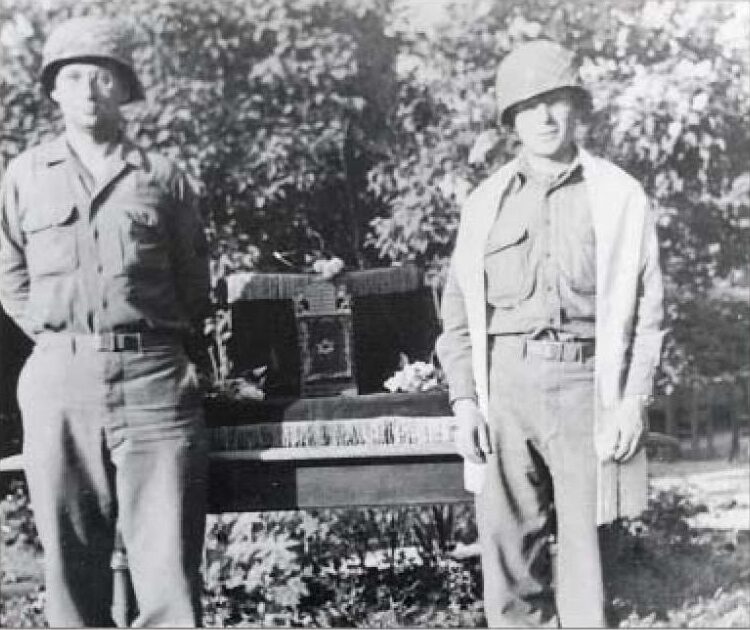
Jewish services performed outdoors from the hood of a jeep by Chaplain Eli Bohnen and his assistant Eli Heimberg. March-May 1945. Collection Eli Heimberg. Credit: GIs Remember: Liberating the Concentration Camps – 1994, Mort Horvitz – National Museum of American Jewish Military History.
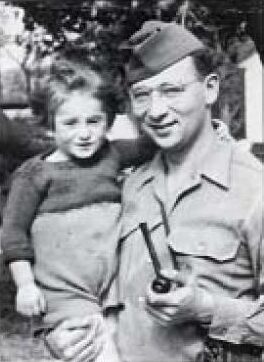
Eli Heimberg holding a three year old refugee from Poland, in Linz, Austria 1945. Collection Eli Heimberg. Credit: GIs Remember: Liberating the Concentration Camps – 1994, Mort Horvitz – National Museum of American Jewish Military History.
As one American liberator, Eli Heimberg, who entered Dachau after its liberation on April 29, 1945, wrote: “Despite the horrors of the Holocaust a new spirit arose among the most of the survivors. From out of the ashes of despair, I witnessed the resurgence of a people taking their place once more in society, retaining their compassion and a continuing will to learn and pursue their culture.”
As the United States observes Memorial Day, International March of the Living salutes the bravery and courage of the American Armed Forces that fought and died to liberate Europe from Nazi tyranny.
Written by Eli Rubenstein, Director of Education for the International March of the Living

